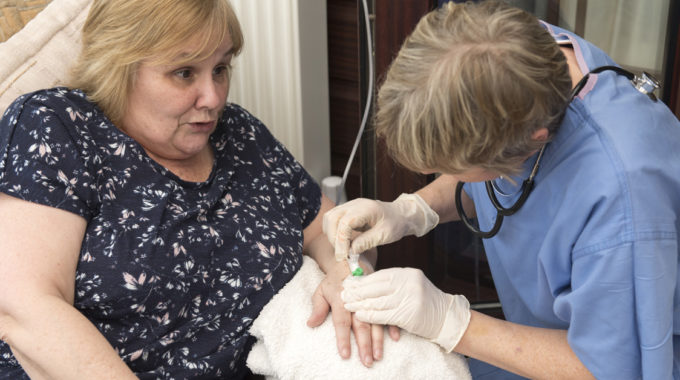
Can Medicare Keep Paying for Joint Replacements?
The number of joint replacement surgeries has risen dramatically in recent decades. So much so that many analysts predict the costs to Medicare will become unsustainable. For instance, in the United States, the rate of total knee replacements has increased 1100% (elevenfold) since 1980.1 The surgeries are quite expensive. Surprisingly, though, the surgeries are not the primary cost drivers in joint replacements. The care after the surgery makes up the majority of the cost – 58% to be precise.2 The care after the surgery is known as post-acute care. When thinking about how to better manage these costs, post-acute care should be the first place to look.
Comparing First Post-Acute Care Settings
When people leave the hospital with mobility challenges and need joint replacement rehabilitation, there are three main settings where they can get the care they need: inpatient rehab facilities, skilled nursing facilities, and home health. Analysts talk about the first setting because many people who receive rehab at inpatient facilities are discharged to home health.
Home Health Cost Savings
When the first post-hospital setting is a skilled nursing facility or inpatient rehab facility, the average cost of post-acute care rises $12,131 higher than when the first post-hospital care setting is home health.2 Traditional Medicare shares those cost savings with patients. With inpatient rehab, normal deductibles and co-pays apply. With home health, Medicare pays 100% of allowable expenses, with no co-pays or deductibles applied.
Home Health Quality of Care
All attempts to scientifically compare the outcomes of inpatient rehab versus home health rehab show that home health rehab gets better outcomes when the patients are appropriate for home health.3-8 A large meta-analysis combining the results of 18 studies and including 1,739 patients concluded the following: in-home physical therapy achieves faster improvements in range of motion compared to center-based physical therapy, and center-based rehab has no outcome advantages over in-home rehab.3
On a more nuanced note, home health cannot truly be better than skilled nursing facility care, because they are simply different programs for different situations. The difference between inpatient rehab and home health rehab is not what the rehab can accomplish. Rather, the difference is the level of support. Home health will send therapists, nurses, and aides to visit intermittently. Home health aides help with bathing, dressing, and maybe a little housekeeping. An agency may send aides up to three times per week. If those intermittent visits are all a person needs to do well at home, home health may be an option. When patients need more support than that, it’s time to consider a skilled nursing facility or inpatient rehab facility.
How Often Home Health is the First Setting
Despite the fact that home health costs less while achieving good outcomes, doctors use home health as the first post-acute care setting in the minority of cases. They prescribe inpatient rehab 61.3% of the time and home health rehab 38.7% of the time.2 Where patients should go after hospital discharge is a matter of the professional judgement of healthcare professionals and patient preference. However, we have some indications that America could use home health more often.
In Australia, not even 40% of privately-insured patients with knee replacements receive inpatient rehab.9 In Canada and the U.K., inpatient rehab following joint replacements is relatively uncommon. If the U.S. handled knee replacement rehab the same as Canada and the U.K., healthcare costs could be much lower.
References
- Maradit Kremers H, Larson D, Crowson C, et al. Prevalence of total hip and knee replacements in the United States. J Bone Joint Surg Am. 2015;97(17):1386-1397.
- Dobson A, DaVanzo J, El-Gamil A, et al. Clinically appropriated and cost-effective placement (CACEP): Improving health care quality and efficiency: Final report. Dobson DaVanzo & Associates, LLC. 2010; Vienna VA.
- Artz N, Elvers KT, Lowe CM, Sackley C, Jepson P, Beswick AD. Effectiveness of physiotherapy exercise following total knee replacement: systematic review and meta-analysis. BMC Musculoskeletal Disorders. 2015 Dec;16(1):15.
- Mahomed N, Davis A, Hawker G, et al. Inpatient compared with home-based rehabilitation following primary unilateral total hip or knee replacement: a randomized controlled trial. J Bone Joint Surg Am. 2008;90:1673-80.
- Tribe K, Lapsley H, Cross M, et al. Selection of patients for inpatient rehabilitation or direct home discharge following total joint replacement surgery: a comparison of health status and out-of-pocket expenditure of patients undergoing hip and knee arthroplasty for osteoarthritis. Chronic Illness. 2005;1:289-302.
- Mahomed N, Koo Seen Lin M, Levesque J, et al. Determinants and outcome of inpatient versus home based rehabilitation following elective hip and knee replacement. J Rheumatol. 2000;27: 1753-8.
- Mallinson T, Bateman J, Tseng H, et al. A comparison of discharge functional status after rehabilitation in skilled nursing, home health, and medical rehabilitation settings for patients after lower-extremity joint replacement surgery. Arch Phys Med Rehabil. 2011;92(5):712-20.
- Werner RM, Coe NB, Qi M, Konetzka RT. Patient outcomes after hospital discharge to home with home health care vs to a skilled nursing facility. JAMA Internal Medicine. 2019 May 1;179(5):617-23.
- Hart A, Bergeron S, Epure L, et al. Comparison of US and Canadian perioperative outcomes and hospital efficiency after total hip and knee arthroplasty. JAMA Surg. 2015; 150 (10): 990-998.






